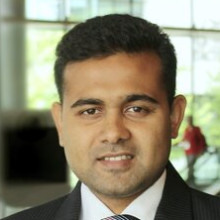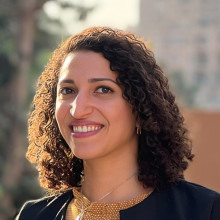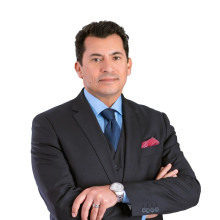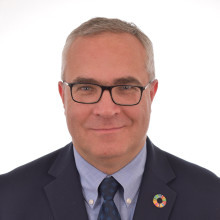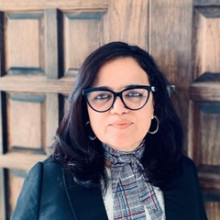
Children and Youth Assembly
Summary
The Children and Youth Assembly at the 12th Session of the World Urban Forum (WUF12) -- convened under the theme "Home is where we live" -- is an opportunity to discuss sustainable urbanization while elevating the voices of children and youth in tackling numerous global challenges. Following the Summit of the Future, this Assembly provides a platform to reflect on the Summit’s outcomes, especially regarding the role of young people in sustainable urbanization. The Assembly will discuss, while it centres children and youth, challenges such as climate change, housing and homelessness, peace and security, and the changing role of technology.
Incorporating children's perspectives is essential because they bring unique insights to sustainable urbanization. Their role is crucial in shaping a future that is both sustainable and inclusive. The Assembly aims to highlight the importance of children in urban development, recognizing them as active contributors to their sustainable future.
Equally, the active engagement of children and youth is a central theme of the Assembly. Children and youth bring innovation and a capacity for change, essential in addressing urban challenges. Their ability to mobilize and advocate, especially in an era of technological advancement and social media, is invaluable. The Assembly seeks to harness this energy, steering it into productive discourse and actions that positively impact urban policies and practices. Engaging children and youth means empowering them as current leaders and change-makers, contributing to sustainable, resilient urban communities.
One of the Assembly's goals is to engage children and youth virtually leading up to the event, ensuring broad and diverse engagement. The Assembly was launched on 12 August, International Youth Day, as a virtual conference which will culminate in the Youth Assembly in November. At the launch, a revised Global DeclarACTION on Youth and Sustainable Urbanization was sought through an online consultation.
The virtual event was contextualized within the Road to Summit and WUF, which also incorporated and built upon the outcomes of the youth-focused Summit of the Future (22-23 September), World Habitat Day (WHD, 7 October, Querétaro, Mexico), and World Cities Day (WCD, 31 October, Alexandria, Egypt). UN-Habitat also reprised its successful "Home is Where We Live" photo contest (see Appendix 1) and further developed the previous Youth DeclarACTION on Youth and Sustainable Urbanization as a final outcome document (see Appendix 2).
For the in-person event, the Assembly will highlight the following key programmatic areas:
- Localization of the SDGs by and for children and youth.
- Young people-led climate action and promoting urban health.
- Poverty alleviation / urban poor: Young people's engagement in fighting poverty in areas of housing.
- Sports and development: Physical activity’s critical role in the physical and mental health of young people.
We will profile UN-Habitat and partner programmes – some examples from UN-Habitat’s programmes are Youth 2030 Cities and the Young Gamechangers Initiative. We will profile initiatives that exemplify the localization of SDGs by and for young people, demonstrating how young people are pivotal in transforming their local communities in areas such as climate change, energy efficiency, healthcare, employment generation, civic engagement, sports and poverty alleviation. We will seek to profile programmes and inspire young people, through showcasing programmes that serve as models of how young people-led and young people-focused initiatives can drive significant impact at the local level, contributing to the broader goals of sustainable urbanization.
Objectives
- To recognize young people’s feeling of urgency and need for immediate action on issues important to them. The Assembly will work to map, through processes such as formulating and adopting the Global DeclarACTION for the Future as a way forward, highlighting the importance of accelerating our actions in the context of achieving the SDGs by 2030.
- Showcase local child and youth-led initiatives in areas of climate change and poverty alleviation in achieving SDGs at the community level, emphasizing the power of local actions in global change.
- Promote collaboration among young people, local and national governments, academia, civil society and the private sector.
Expected outcomes and impacts
- A DeclarACTION, built on the Pact for the Future and the Global Children and Youth DeclarACTION on Youth and Sustainable Urbanization emphasizing the urgency and necessity of young people action in urban sustainability.
- Increased awareness of children and youth participants on urban sustainability issues, and how they can advocate for those issues within the WUF and beyond
- Raising the profile of children and youth in the WUF and with local and national government, the private sector and academia
- Concrete actions that children and youth can take to effect sustainable urban development.
Guiding questions
- What innovative strategies can young people employ or currently employ to address current urban challenges?
- What are the most pressing urban sustainability issues that require immediate attention from young leaders, and how can they be tackled innovatively?
- How can the creativity of young people be harnessed to inspire change in urban policies and practices?
- How can young people-led local initiatives be effectively integrated into national and global sustainability strategies?
- How can local young people initiatives be effectively scaled up to have a broader impact while retaining their community-specific focus and relevance?
- How can young leaders work with local authorities to integrate sustainability into urban planning and community development from the ground up, (e.g. Urban Youth Council model in Bangladesh)?
- How can intergenerational and cross-sectoral collaborations be fostered to enhance the effectiveness of young people-led urban initiatives?
- What are the key elements to consider when creating sustainable partnerships for urban development between child organizations, youth organizations, local governments, academia and the private sector?
- How can young people-led initiatives ensure inclusive participation and representation, especially of marginalized groups, in urban planning and decision-making processes?

 Streaming on UN WEB TV
Streaming on UN WEB TV
